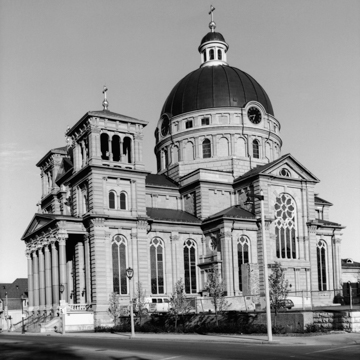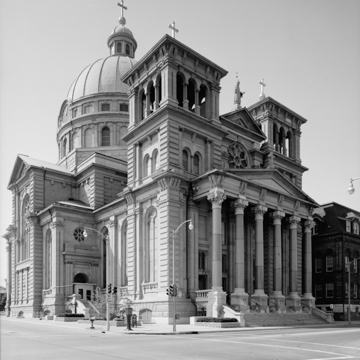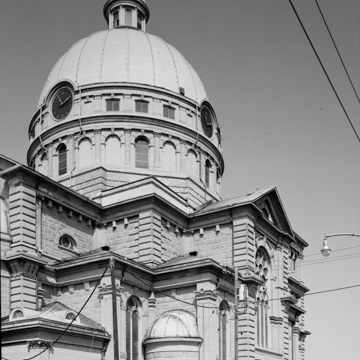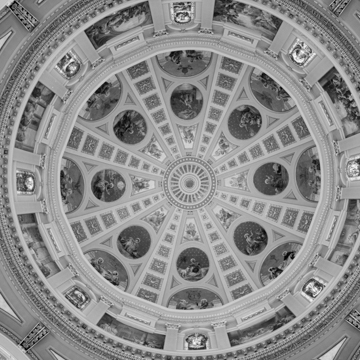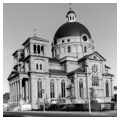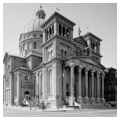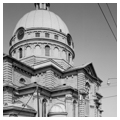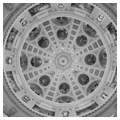The Basilica of St. Josaphat is a jubilant proclamation of religious devotion and ethnic pride. The massive domed stone church’s Beaux-Arts design affirms the growth and influence of Milwaukee’s Polish community. Parishioners donated labor to build the church, but cost overruns brought financial hardship to the 12,000-member parish. Families even mortgaged their homes to lend or donate money to the project.
St. Josaphat’s original design called for a brick structure trimmed with terra-cotta, but when Father Wilhelm Grutza, the parish priest, went to Chicago to buy brick, he discovered a low-cost supply of fine-cut limestone, available with the imminent demolition of the Chicago post office. He had the building disassembled, shipped to Milwaukee on five hundred railroad flatcars, and reassembled according to Brielmaier’s design, modeled on St. Peter’s Basilica in Rome. Cruciform in plan, the church centers on a massive copper dome, 250 feet high. A Corinthian colonnade, pediments, and two square bell towers dominate the dramatic facade. Tall, narrow, round-topped traceried windows light the sides. Even after the church opened, it took nearly thirty years to complete the magnificent interior decoration. Gilded and painted plasterwork, an elaborate marble pulpit, and wood and marble shrines and altars were added. Art glass windows imported from Innsbruck, Austria, were gradually installed throughout the church. Conrad Schmitt Studios of New Berlin, Wisconsin, painted the large mural behind the main altar, and in 1928 Italian artist Gonippo Raggi executed the biblical scenes of episodes in the life of St. Francis and important events pertaining to Polish saints and history.
Few Wisconsin churches approach the scale and grandeur of St. Josaphat. In 1929, Pope Pius XI conferred basilica status on the church to honor the parish’s strong expression of religious faith and its artistic achievement, making it the third basilica designated in America, among thousands of Roman Catholic churches.


